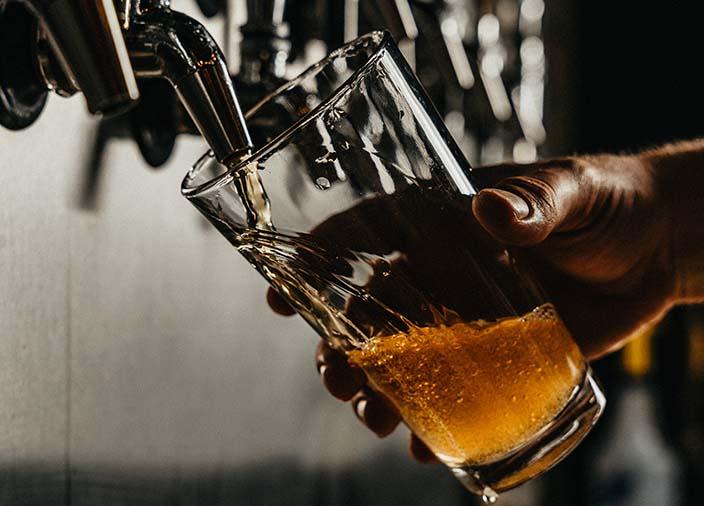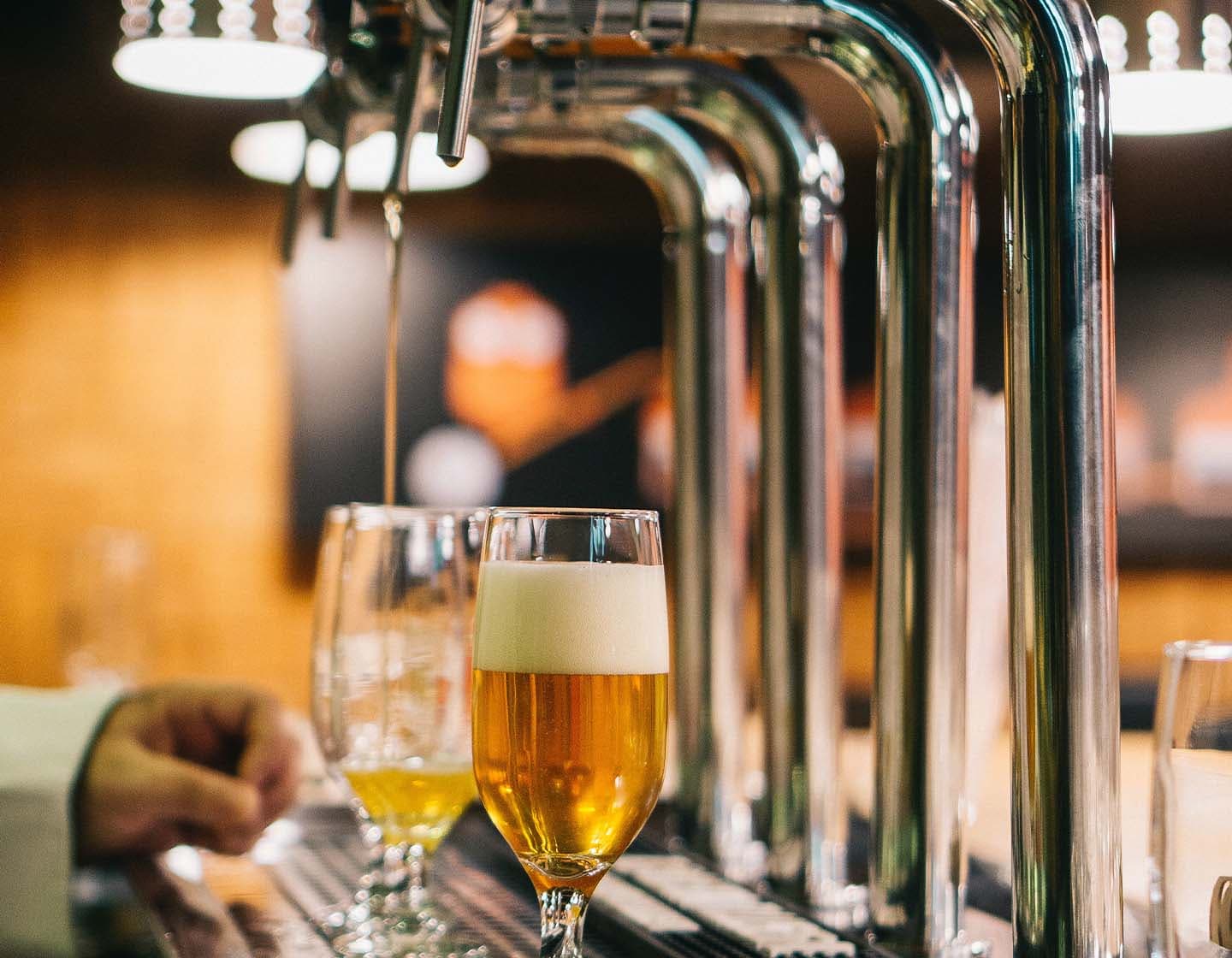Mastering Beer Service
Learn how to offer your guests a faultless beer experience every time. From the basics of beer serving, to mastering how to pour a Guinness.
Estimated reading time: 8 minutes
Serving Beautiful Beer
Beer, revered for its rich history and myriad flavours, stands as a testament to the enduring craft of brewing. When it comes to beer service, the method matters, and the details make all the difference. Good beer service is the hallmark of a quality bartender. Fine-tune this skill to stand out and treat your guests to a wonderful experience.
From the vessel chosen to the pouring technique, serving beer is an art grounded in tradition. Whether it is the timeless pint of Guinness or any other beer, the commitment to best practices ensures that every sip is a journey through history and flavour.
Learn the essentials of quality beer service for all types of beer, with a spotlight on the iconic Guinness pour.

Grasping the Basics
Understanding the basic components of quality beer service can give you the foundations to succeed in the bar industry. There are many things you need to think about for each beer to ensure that it’s perfectly presented to your customer.
The first, is how the beer is served and the differences between bottled and draught beer.
- Bottled Beer offers consistent, convenient single servings of beer. With little to no special equipment required (apart from a means of chilling), it is the most common beer format across the world.
- Draught Beer is pulled from kegs and is often fresher and can be a more economical choice for establishments. The absence of light exposure ensures the beer’s taste remains unaltered.
Glassware
No matter the type, all beers need to be served with an accompanying glass for the drink to be poured into. Much like with cocktails, the type of glassware can significantly influence the beer-drinking experience. While there are numerous specialised beer glasses, the following are fundamental:
- Pint Glass: A versatile choice, suitable for many beer varieties.
- Tulip Glass: Designed for aromatic beers, it allows full appreciation of nuanced scents.
- Stein: Historically significant, it's a sturdy choice for larger servings.
When pouring beer, the technique changes depending on if it’s bottled or draught. To get your pour right every time, follow this expert insight.
- Bottled Beer: Hold the glass at a 45-degree angle. Slowly fill half the glass, and then straighten to pour down the centre, retaining aroma with optimum foam.
- Draught Beer: Fully open the tap, adhere to the 45-degree rule till three-quarters, then straighten. Close swiftly to prevent drips.
Top Tips for Expert Beer Service
With an understanding of the basics, follow these best practices and tips to provide an unrivalled experience while allowing your beers to showcase their flavours.
- Clean Glassware: Any residue can interfere with the beer's flavour profile and its ability to form a proper head. Rinse the glass just before pouring for a smoother pour.
- Appropriate Temperature: The right serving temperature varies with the type of beer. Lagers are best a bit cooler than ales. Draught systems should be maintained at a consistent, optimal temperature.
- Limit Light Exposure: Especially for bottled beers, light can degrade the quality. Store them in a cool, dark place.
- Regular Line Cleaning: For draught systems, regular cleaning is crucial to ensure the beer isn’t tainted by residues or contaminants.
- Freshness: Always check expiry dates and ensure beers are within their shelf-life before serving.
Pouring the Greatest Guinness
Of all the beers you may serve, Guinness deserves special consideration thanks to its unique two-part pour. Guinness can catch out novice bartenders, so make sure you have the technique mastered to look knowledgeable.
The perfect pint of Guinness is a unique experience in the world of beer. It's certainly a matter of taste, but it's also about presentation, temperature and distinctive layers that create an impeccable pint of clear, dark stout topped with a white, dense, creamy foam.
When Guinness added nitrogen to their stout in the late 50’s and early 60’s, their brewers and scientists noted that, to attain a solid, substantial head, a two-part pour was optimal.
To perfectly pour a Guinness, from draught or bottle:
- Fill three-quarters of the glass.
- Set the beer aside to allow bubbles to surge and settle, creating the perfect foam head.
- Once settled, top off the pint.
The perfect two-part pour requires patience, but it’s worth it for the customers and your venue. This is because it guarantees the perfect taste due to the perfect head size.
- The creamy, nitrogenated head of Guinness has a bitter note to it. This is crucial to the beer’s overall flavour profile.
- If the head is too small, it means there’s not enough bitterness to balance the sweetness from the malt profile. If the head is too big, it means too much bitterness, which overwhelms the sweetness.
- It promises an appealing visual presentation, with a consistent surge and a perfect dome.
Guinness Pour Tutorial
Master the Guinness pour technique to serve the perfect pint every time. Watch this step-by-step tutorial to get a visual guide on what you need to do.
Key Takeaways
- The type of glass you serve your beer in is very important. Offer tulip glasses for aromatic beers, steins for larger quantities, and pints for a traditional serve.
- The right pouring technique makes or breaks a beer service. Always tilt the glass at a 45-degree angle to reduce excess foam.
- Serving beer at the optimal temperatures in clean glassware ensures the best flavours come through.
- Guinness is a unique beer as it requires a two-part pour. Master this to become excellent at beer service.
Become a member of Diageo Bar Academy for free today and get loads of extras, including exclusive access to our free menus, recipe cards, courses, and more!
